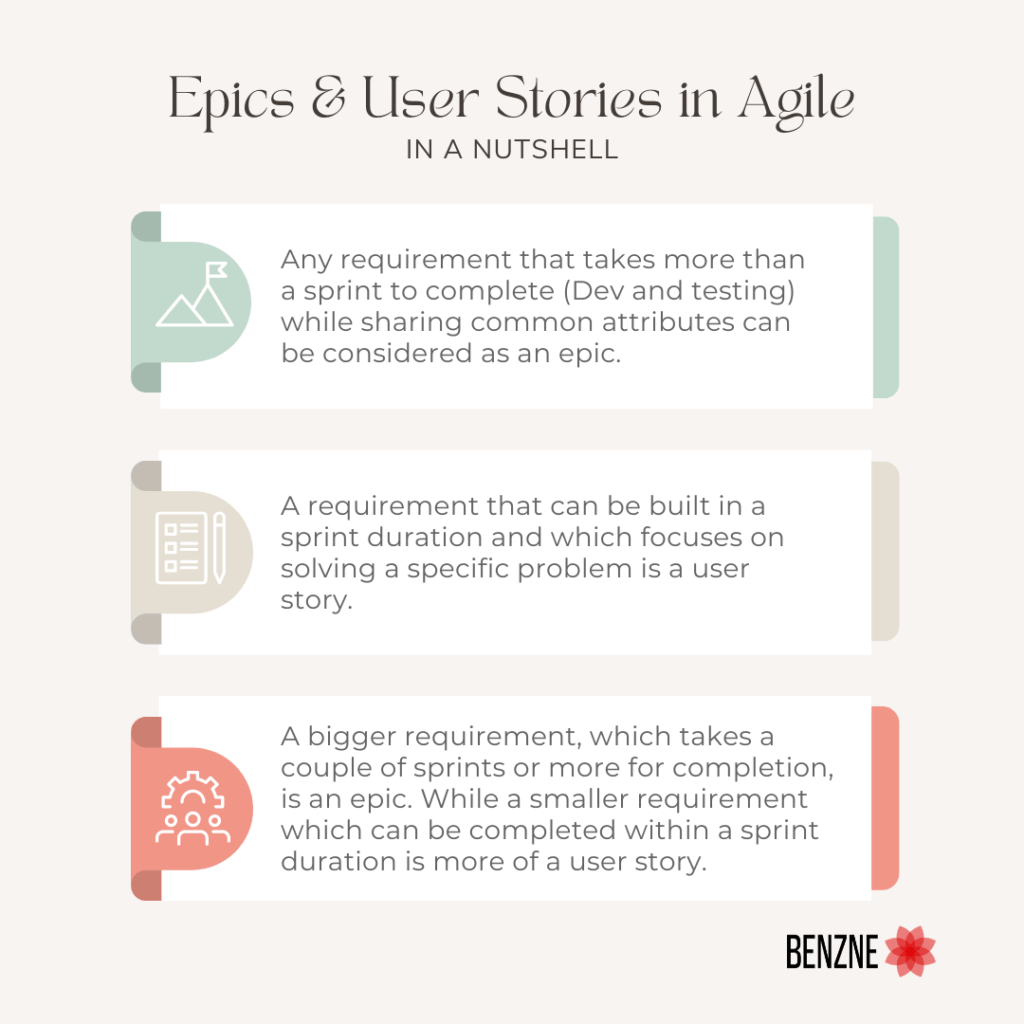Struggling to differentiate between an epic and a user story in Agile? Wondering if the requirement you have should be treated as an epic or a story? This write up will help you get clarity on epic and a user story and explain details around both.
Let’s begin with a very simple definition of an epic, as the word suggests epic means big. In simple words, any requirement that takes more than a sprint to complete (Dev and testing) while sharing common attributes can be considered as an epic. For example, a requirement to set up a payment gateway for a product. We want the payments to be Secure and the date to be confidential. Along with that we want the users to be able to use different modes of payment ex : credit cards, UPI, wallets, Net Banking etc. This entire requirement, which is huge in itself, is an epic.
Now then what is a user story? A requirement that can be built in a sprint duration and which focuses on solving a specific problem is a user story. In the payment gateway example described previously, building a requirement to enable different modes of payment like credit cards, UPI, Net Banking etc, could be treated as different user stories. Primarily so, because the dev team confirmed that these are deliverables and the functionality is demonstrable to the customer by the end of a sprint.

Let us discuss another analogy to clarify matters further. We are all aware of various series available on say, netflix. Each season, spanning days or even weeks with a common theme is comparable to an epic. While each episode, spanning a shorter duration, with its own entertainment value itself could be compared to a user story. Multiple such episodes or stories thereby constituting a season or an epic.
In a nutshell a bigger requirement, which takes a couple of sprints or more for completion, is an epic. While a smaller requirement which can be completed within a sprint duration is more of a user story. Mind you, both of these have an outcome and a business value associated.
Let us move on to now look at the genesis of epics and user stories. It all begins with understanding the product team requirements, prior to the start of the project. User journey maps are created to understand user needs – this is done with a collaborative effort of the product team, customer facing representatives, tech leads and all the relevant stakeholders. Personas and user roles are also identified as part of this exercise.
Partner with one of the top agile consulting firms for unparalleled expertise. Unlock agility, drive growth, and stay ahead of the curve. Explore our offerings now.
The various activities of a user or user journey are then identified and sorted, left to right . This forms the backbone of the requirement, from where each idea is then drilled down to the next level. These aforementioned ideas or tasks are nothing but the user story, and a collection of such user stories – sharing the same attributes, are your epics.
For more information on best practices of writing user stories , please refer our blog – https://benzne.com/12-basic-pointers-to-write-a-good-user-story/
Please reach out to us at “consult@benzne.com” for any feedback, suggestions, or questions.







